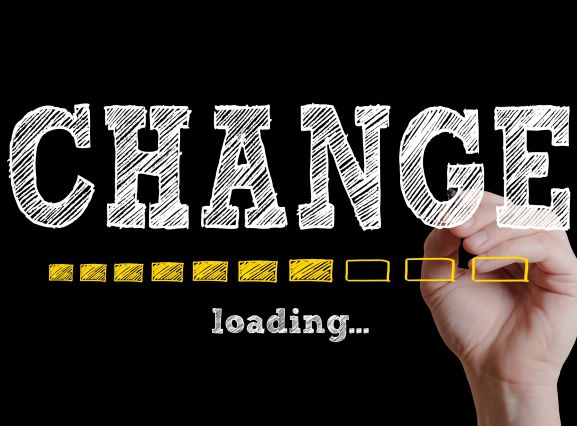Using The 5 R’s to Successfully Change Business Goals
 Publié le 23 June 2020
Publié le 23 June 2020
Change is necessary, especially for business. 2020 has been a year of huge change for all businesses, and predominantly unexpected change at that. As customer needs and demands continue to evolve, companies in all industries and sectors must be prepared to adapt in order to fulfill and meet them. Instead of ignoring potential problems and sticking to the same-old methods and procedures, companies need to embrace the need to change their business goals. Fortunately, there is a simple procedure to identify problems, decide on a new course of action and make the required changes. Here are the 5 R’s to successfully change business goals:
- Recognize
- Research
- Reorganize
- Reassess
- Results
Recognize
The first step to changing business goals is to recognize that there is a problem that needs to be addressed. Marketplace demands can fluctuate wildly and with little warning, sometimes overnight. While these changes and trends can occasionally be predicted before they occur, it is also possible for them to be a surprise. Obvious problems can be flaws in products, poor timing for marketing initiatives, partnerships that fall through and other similar issues which are often outside a business’ control. In these cases, it will be easier to recognize that there is a problem, making it possible to quickly identify the root cause and any potential solutions that could address it.
A more complicated situation occurs when there is not an obvious problem that is causing harm to a business. Company leaders may not even recognize that there is a problem, because the obvious signs may not be there. If quarterly growth is slightly less than expected, or if contract renewal rates are not as active as predicted, or if the target audience does not respond as enthusiastically as predicted, it points towards serious issues that may continue to grow and cause greater harm to business goals if left unrecognized.
The worst thing that a company can do is fail to recognize that they need to change business goals and instead fight against it. Think of how major record labels reacted to the first generation of online music sharing services. Instead of recognizing that they needed to change their delivery method to match consumer demands, they actively fought against any sort of change and upheld the existing model as satisfactory. The result is that physical music sales declined for decades, and by the time that selling and streaming music online became widespread, it was only after years of stagnant growth and consumer dissatisfaction. The main business goal should be to meet consumer demand, not uphold the status quo.
Research
After recognizing that business goals need to be changed, the next step is to further research the problem, its root causes and possible solutions. Company leaders must make it a priority to stay up-to-date on trends affecting their industry and consumer base. This can be difficult to do, but performing this proactive research can make it easier to spot emerging trends and gauge how customers will react. This is one reason that the market research sector as a whole is valued at nearly $50 billion USD, it’s just that important.
During research, companies need to look at what competitors and industry colleagues are doing to adjust their business goals, and how these new goals connect with their customers. Here are some basic example questions that need to be asked during the research phase:
- Is there a product or service that is meeting a new need?
- Is there a need or space in the market that did not exist previously?
- Are competitors readapting existing products and assets or creating something entirely new?
- Did competitors recognize any gradual trends or changes that went unnoticed or unaddressed by others?
- What business goals need to be changed to meet consumer needs?
The more that is known about the root cause of problems, the simpler it will be to match up possible solutions and change business goals to meet customer desires. Doing the research will make it easier to gather hard data, figures and statistics to which to base big decisions. Research shows that organizations that are highly data-driven are 3x more likely to report a significant improvement in their decision making effectiveness compared to less data-driven and research-based companies. Important choices that are based on hard evidence are one of the more reliable ways to move a business forward, and without proper research it will be extremely difficult to have the right information on which to base the decision to change business goals.
Reorganize
After researching causes and solutions to industry problems and trends, organizations will be in a better position to start successfully changing business goals. This means that the hard part is about to begin. The most challenging aspect about making changes is reorganizing the company in order to put the necessary changes into place. No organization likes to think that the way they have conducted their business up to this point is ineffective or that they have had incorrect business goals, but this is the reality that company leaders accept in order to successfully change business goals.
There needs to be a top-down evaluation of the business in order to identify that components need to be adapted and reorganized to facilitate important changes in business goals. The process of reorganization needs to be completely open and honest, with people at every level of the company willing to discard the familiar patterns and processes they have been following and embrace new business goals. This openness will lead to a high level of trust among employees, managers and executives, helping to keep everyone working together towards the same goals.
Successful reorganization requires a growth mindset, with everyone understanding that this process will put them all on the path to further success. This type of continuous learning is already a key component of long-term career success, with 82% of executives stating this is something they actively seek from employees. Once the process of reorganization is complete, it will be possible for new business goals to be successfully put into place.
Reassess
After a change in business goals has been made and the company has been reorganized to facilitate them, the process is still not yet complete. The changes and procedures put into effect must be constantly reassessed in order to ensure that they are effective and efficient. Even though the decision to change business goals has been based on research and hard evidence, it is still not possible to predict exactly how consumers will react.
The same research that was conducted to identify problems should also happen to evaluate what effect changing business goals has had. Gathering more data will make it possible to gauge the need to reassess the changes that have been made and create a better fit for market realities. There still needs to be some caution with preliminary results right after new business goals have been put into place, but at the very least it will provide an indication that things are moving in the correct direction.
It is also important to reassess how employees are reacting to business goals and the reorganization of the workforce. If new procedures are proving to be not as effective as was predicted, reassess the training and guidance that employees have been receiving if something is not clear or if a better workflow procedure emerges, it is far easier to make an adjustment at this point. Ensure that employees remain informed, committed and supported regarding a change in business goals. A recent Harvard Business Review survey found that 70% of employees say that having a clear understanding of how their job contributes to overall company strategy plays a key role in their level of engagement. Every individual employee must understand the vital role that each of them plays, and feel that they have a say in the way that new procedures and processes are implemented.
Results
Once new business goals have been reassessed and fine-tuned, the true results will start to become clear. As a business starts to see results because of new changes and procedures, these should be immediately shared with every employee and member of the workforce. Employees need to see that the work they do and the effort they make has a demonstrable effect on the company. Research indicates that up to one out of three workers do not believe that their company is honest and transparent with them. Such a lack of openness can seriously harm the positive effect of changing business goals and this environment cannot be allowed to continue. Seeing the results will have a positive impact on morale, and enforce the positive effect of establishing a growth mindset within the organization.
All team members need to be committed to the fact that changing business goals is an ongoing process. Everyone needs to remember that results are not guaranteed or permanent. Making sure that all levels of the company remain committed to change and adaptation is one of the best ways to guarantee further success. By seeing that these efforts have had real quantifiable results, it will mean that employees, managers, and leaders will be more willing to continually make adjustments and change business goals again to keep up with future consumer demands.
Making successful business changes takes effort and work on behalf of a company and all of its employees. Following the 5 R’s to successfully change business goals provides a strong framework, which will allow all team members to understand the need for change, have a voice in the process and see the positive results for themselves.







